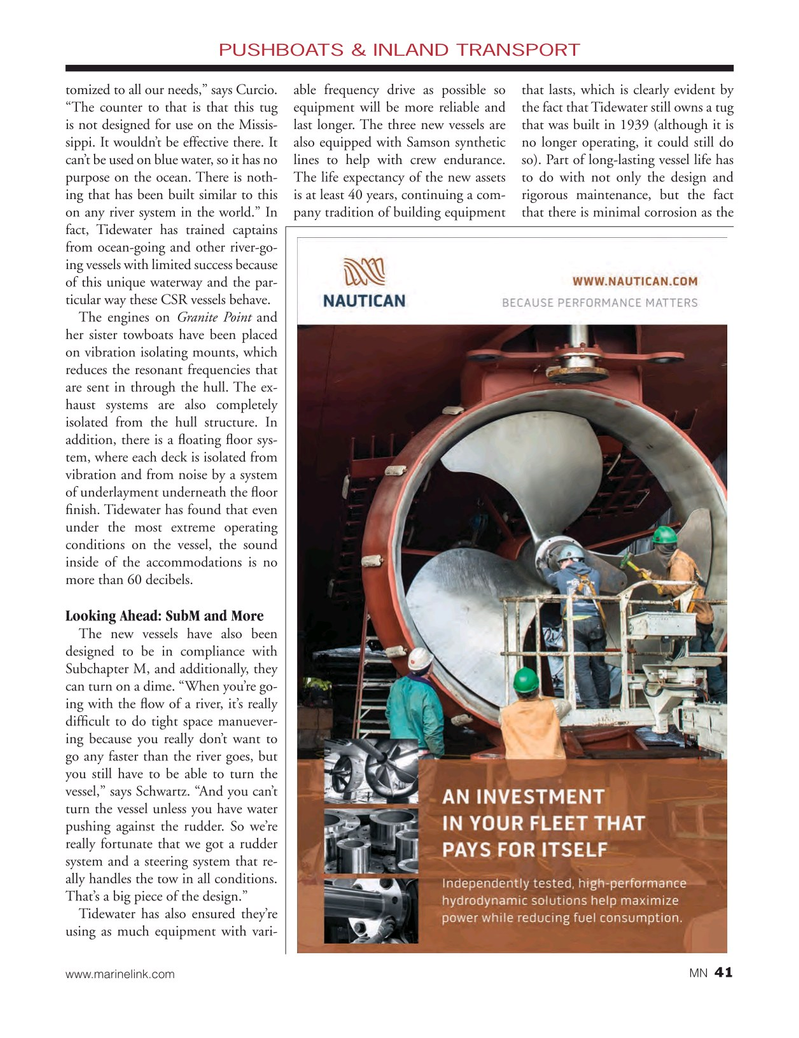
Page 41: of Marine News Magazine (March 2016)
Push boats, Tugs & Assist Vessels
Read this page in Pdf, Flash or Html5 edition of March 2016 Marine News Magazine
PUSHBOATS & INLAND TRANSPORT tomized to all our needs,” says Curcio. able frequency drive as possible so that lasts, which is clearly evident by “The counter to that is that this tug equipment will be more reliable and the fact that Tidewater still owns a tug is not designed for use on the Missis- last longer. The three new vessels are that was built in 1939 (although it is sippi. It wouldn’t be effective there. It also equipped with Samson synthetic no longer operating, it could still do can’t be used on blue water, so it has no lines to help with crew endurance. so). Part of long-lasting vessel life has purpose on the ocean. There is noth- The life expectancy of the new assets to do with not only the design and ing that has been built similar to this is at least 40 years, continuing a com- rigorous maintenance, but the fact on any river system in the world.” In pany tradition of building equipment that there is minimal corrosion as the fact, Tidewater has trained captains from ocean-going and other river-go- ing vessels with limited success because of this unique waterway and the par- ticular way these CSR vessels behave.
The engines on Granite Point and her sister towboats have been placed on vibration isolating mounts, which reduces the resonant frequencies that are sent in through the hull. The ex- haust systems are also completely isolated from the hull structure. In addition, there is a ? oating ? oor sys- tem, where each deck is isolated from vibration and from noise by a system of underlayment underneath the ? oor ? nish. Tidewater has found that even under the most extreme operating conditions on the vessel, the sound inside of the accommodations is no more than 60 decibels.
Looking Ahead: SubM and More
The new vessels have also been designed to be in compliance with
Subchapter M, and additionally, they can turn on a dime. “When you’re go- ing with the ? ow of a river, it’s really dif? cult to do tight space manuever- ing because you really don’t want to go any faster than the river goes, but you still have to be able to turn the vessel,” says Schwartz. “And you can’t turn the vessel unless you have water pushing against the rudder. So we’re really fortunate that we got a rudder system and a steering system that re- ally handles the tow in all conditions.
That’s a big piece of the design.”
Tidewater has also ensured they’re using as much equipment with vari- 41 www.marinelink.com MN
MN Mar16 Layout 32-49.indd 41 2/19/2016 11:01:01 AM

 40
40

 42
42
